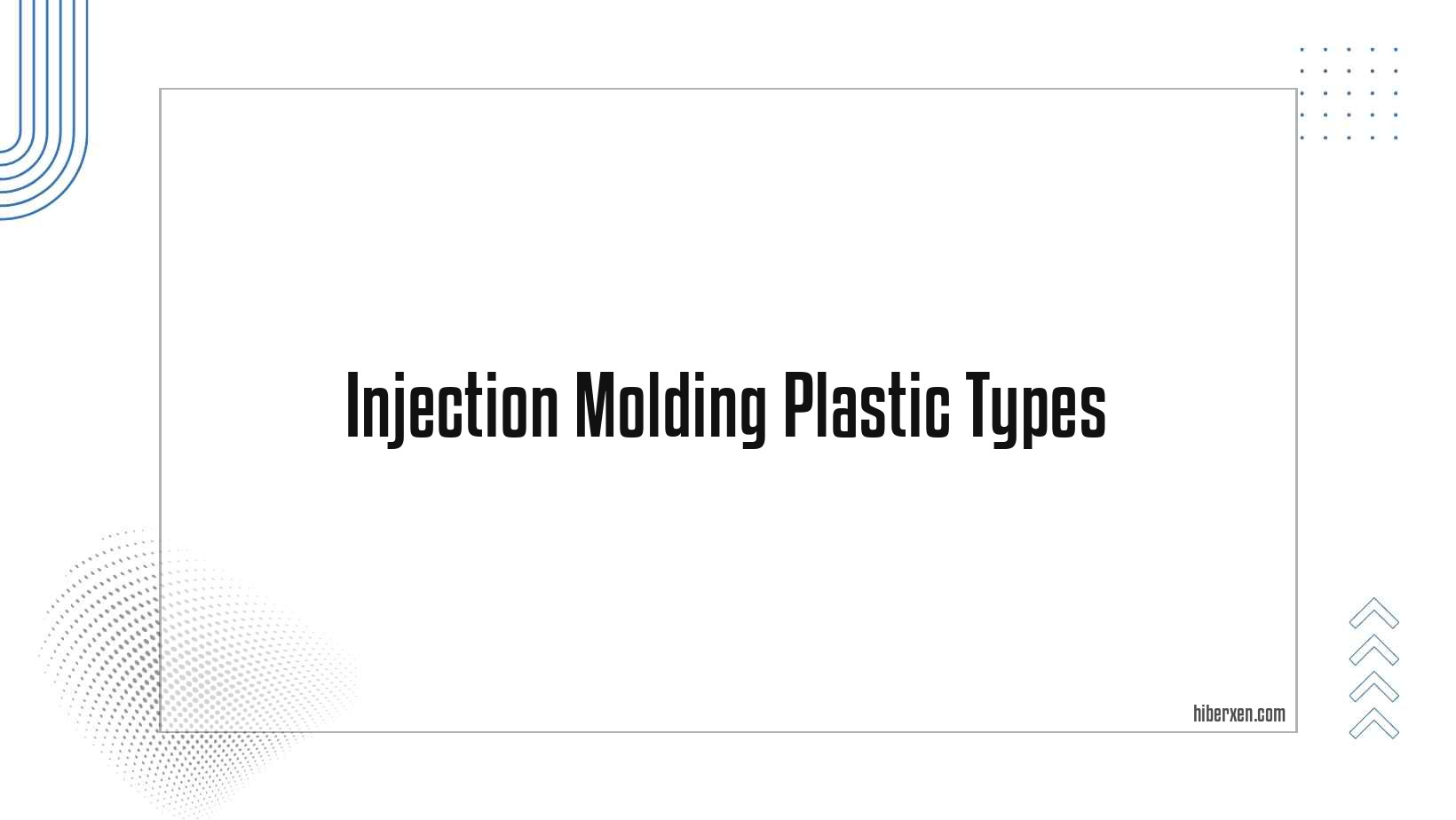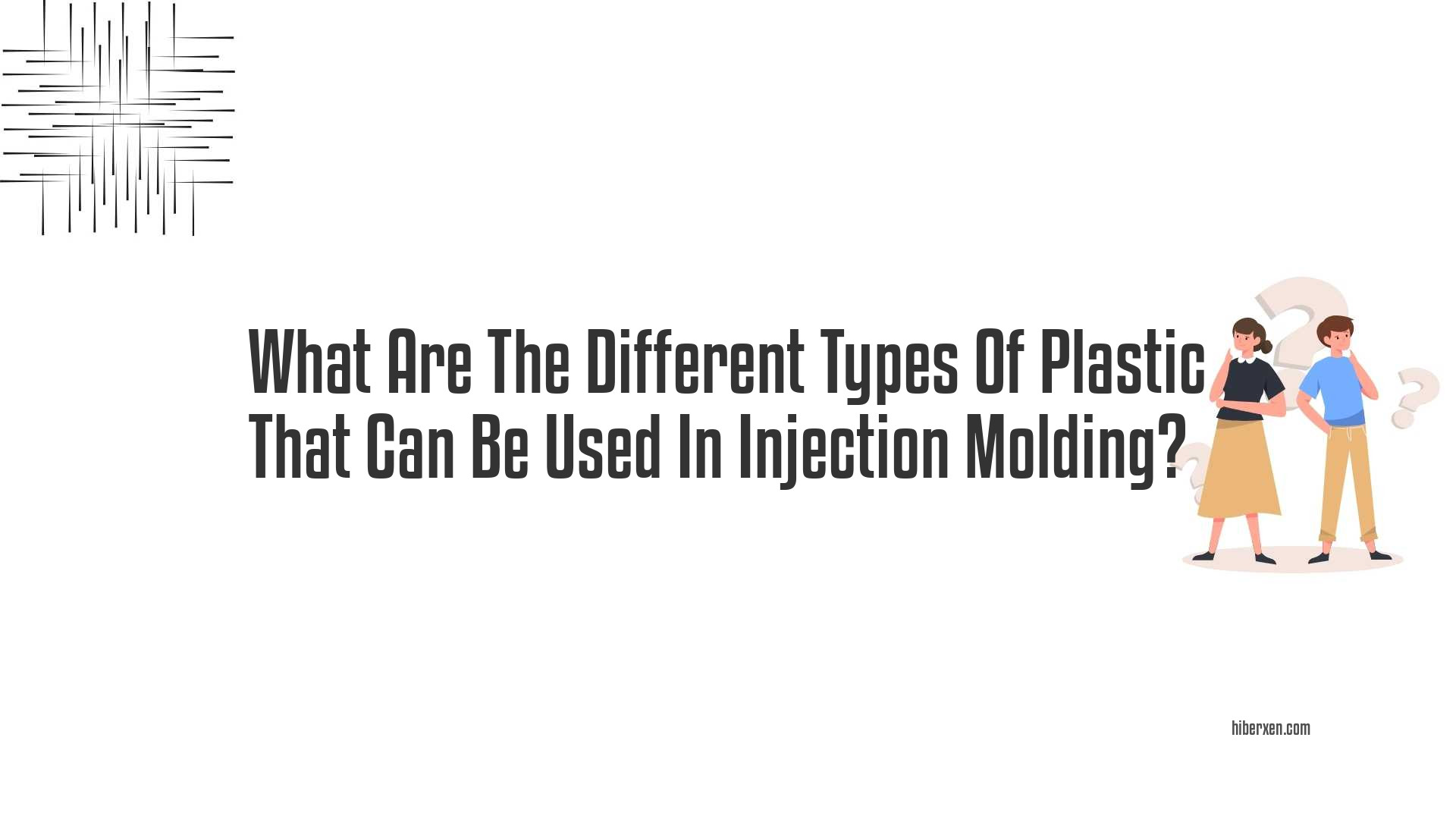The three main types of plastic used in injection molding are polyethylene (PE), polypropylene (PP), and polystyrene (PS).
Injection molding is a process that can be used to create a wide variety of parts and products from a variety of plastics. Injection molding is a versatile process that can be used to create a wide variety of parts and products from a wide variety of plastics. Injection molding can be used to create parts with a wide variety of shapes, sizes, and colors. Injection molding is a fast and efficient process that can be used to create a wide variety of parts and products.
What Are The Different Types Of Plastic That Can Be Used In Injection Molding?
There are many different types of plastic that can be used in injection molding, but the most common are thermoplastics.
Injection molding is a manufacturing process for creating parts by injecting molten material into a mold. Injection molding can be performed with a wide variety of materials, including metals, glasses, elastomers, confections, and most commonly thermoplastic and thermosetting polymers. Material for the part is fed into a heated barrel, mixed, and forced into a mold cavity where it cools and hardens to the configuration of the cavity.
There are three main types of plastics that can be used in injection molding: thermoplastics, elastomers, and thermosets.
Thermoplastics are the most common type of plastic used in injection molding. They are easy to melt and mold, and can be recycled. Some examples of thermoplastics include polyethylene, polypropylene, and polystyrene.
Elastomers are plastics that have the ability to stretch and return to their original shape. They are often used in applications where flexibility is needed, such as in tires and seals. Some examples of elastomers include silicone and rubber.
Thermosets are plastics that cannot be melted and molded after they have been cured. They are often used in applications where heat resistance is needed, such as in electrical insulation. Some examples of thermosets include epoxy and polyester.
What Are The Advantages And Disadvantages Of Each Type Of Plastic?
There are many types of plastic, each with its own advantages and disadvantages.
Most of us are familiar with the plastic water bottles we buy at the store, but there are actually many different types of plastic. Each type has its own advantages and disadvantages.
Polyethylene terephthalate (PET or PETE) is a strong, lightweight plastic that is clear and colorless. It is often used to make soda and water bottles. PET is a safe, stable and recyclable material. However, it is not biodegradable, so it can take hundreds of years to break down in the environment.
High-density polyethylene (HDPE) is a durable, stiff plastic that is lighter than water. It is often used to make milk jugs, detergent bottles and juice containers. HDPE is safe, stable and recyclable. However, it is not biodegradable.
Polyvinyl chloride (PVC) is a strong, rigid plastic that is used to make pipes, window frames and car interiors. PVC is recyclable, but it can release harmful chemicals into the environment when it is manufactured or disposed of improperly.
Polypropylene (PP) is a strong, lightweight plastic that is used to make food containers, Tupperware and car parts. PP is safe, stable and recyclable. However, it is not biodegradable.
Polystyrene (PS) is a lightweight plastic that is used to make Styrofoam, egg cartons and disposable coffee cups. PS is not biodegradable and can be harmful to the environment if not disposed of properly.
So, what are the advantages and disadvantages of each type of plastic?
PET is strong, lightweight and recyclable, but it takes hundreds of years to break down in the environment.
HDPE is durable, stiff and recyclable, but it is not biodegradable.
PVC is strong, rigid and recyclable, but it can release harmful chemicals into the environment.
PP is strong, lightweight and recyclable, but it is not biodegradable.
PS is lightweight but not biodegradable and can be harmful to the environment.
What Are The Benefits Of Using Injection Molding For Plastic Production?
Injection molding is a manufacturing process for producing parts by injecting material into a mold.
Injection molding is a manufacturing process for creating parts by injecting molten material into a mold. Injection molding can be used to create a wide variety of parts and products, from small components like bottle caps and toothbrushes to large products like car body panels and washing machine tubs. The process is relatively fast and efficient, and can be used to produce large quantities of identical parts.
There are several benefits to using injection molding for plastic production, including:
1. Increased Efficiency: Injection molding is a very fast and efficient way to produce large quantities of identical parts. The process can be automated to further increase efficiency.
2. Reduced Labor Costs: Injection molding is a highly automated process that requires very little labor, which reduces production costs.
3. Increased accuracy: Injection molding produces parts that are very precise and accurate.
4. Versatility: Injection molding can be used to produce a wide variety of parts and products in different shapes, sizes, and colors.
5. Durability: Injection molded parts are very strong and durable.
6. Recyclability: Injection molded parts can be recycled or melted down and reused to create new parts.
7. Low Waste: Injection molding produces very little waste, as the material is melted and injected into the mold under high pressure.
8. Low Scrap Rate: Injection molding has a very low scrap rate, as parts that are not up to standard can be recycled or melted down and reused.
9. Safety: Injection molding is a safe manufacturing process.
10. Environmental Friendliness: Injection molding is a very environmentally friendly manufacturing process.
What Are The Drawbacks Of Injection Molding Plastic Production?
The main drawback of injection molding is the high initial cost of the mold.
Injection molding is a popular manufacturing process for producing plastic parts. However, there are some drawbacks to this process that you should be aware of.
One of the biggest drawbacks is the high cost of initial set-up. Injection molding requires specialized equipment and tooling, which can be quite expensive. If you are only planning on producing a small batch of parts, the cost of set-up may not be worth it.
Another drawback is the potential for defects in the finished parts. Injection molding is a highly precise process, but there is always the potential for human error. This can lead to defects in the shape, size, or finish of the parts.
Finally, injection molding can be a slow process. If you need parts quickly, this may not be the best manufacturing method for you.
Despite these drawbacks, injection molding is still a popular manufacturing process for many companies. If you are considering using this process for your next project, be sure to weigh the pros and cons carefully to see if it is the right fit for you.
What Are The Different Types Of Injection Molding Machines?
There are several types of injection molding machines, including hydraulic, electric, and hybrid machines.
Injection molding machines are classified primarily by the amount of clamping force they can apply. This is measured in U.S. tons. There are general purpose, all-electric, and two-platen machines.
The amount of clamping force is important because it affects the size and complexity of the parts that can be molded. It also affects the cycle time, or the amount of time that it takes to inject the molten plastic, cool the plastic, and eject the part.
All-electric injection molding machines are more expensive than hydraulic machines, but they are faster, more precise, and more energy-efficient.
Two-platen machines are larger and more expensive than other types of injection molding machines, but they can mold larger and more complex parts.
Injection molding machines are also classified by the type of control system they use. The three types of control systems are hydraulic, all-electric, and hybrid.
Hydraulic injection molding machines are the most common type. They use hydraulic cylinders to apply the clamping force.
All-electric injection molding machines use electric motors to apply the clamping force. They are more expensive than hydraulic machines, but they are faster, more precise, and more energy-efficient.
Hybrid injection molding machines use both hydraulic and electric systems. They are more expensive than hydraulic machines, but they offer the best of both worlds in terms of speed, precision, and energy-efficiency.
FAQ
What Are The Different Types Of Molds That Can Be Used In Injection Molding?
There are many different types of molds that can be used in injection molding, depending on the desired final product. Some common mold types include:
-Two-plate molds: This type of mold is composed of two pieces that are hinged together. The material is injected into the mold through a sprue in one of the pieces, and the finished product is ejected from the other piece.
-Three-plate molds: This type of mold is similar to a two-plate mold, but with an additional plate that forms the bottom of the mold cavity. The material is injected into the mold through a sprue in one of the side plates, and the finished product is ejected from the bottom plate.
-Stack molds: Stack molds are composed of multiple mold cavities that are stacked on top of each other. The material is injected into the mold through a sprue in the top cavity, and the finished product is ejected from the bottom cavity.
What Are The Steps Involved In The Injection Molding Process?
1. Material is fed into a heated barrel, where it is melted
2. The molten material is then injected into a mold cavity
3. The material cools and hardens in the mold
4. The part is then ejected from the mold
What Are The Quality Control Measures That Should Be Taken During Injection Molding?
Conclusion
Injection molding plastic types can be divided into two main categories: thermoplastics and thermosets. Thermoplastics can be melted and reformed multiple times, while thermosets can only be molded once. Injection molding is a versatile manufacturing process that can produce parts with a wide range of properties.
Hopefully, you are now clear on the different types of plastic that can be used for injection molding. If you still have any questions, please feel free to leave a comment below.
Author
-
I'm Shahrear, a Designer Lead who loves electronics. Since 2003, I’ve been traveling and living all over the world. I love breaking down complex concepts in electronics and presenting them to others in an approachable way. I think that the language used in most books about electronics is hard for people who don't already know about electronics to understand. I want that to change. So, I've started blog where I talk about everything on electronics for people who are just starting out.
View all posts






